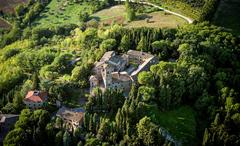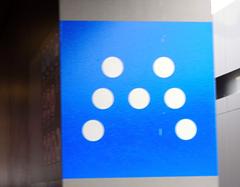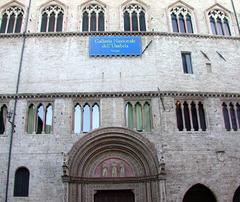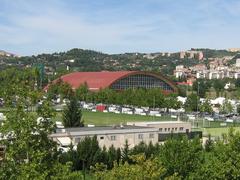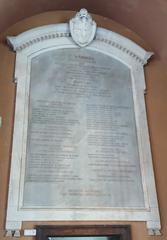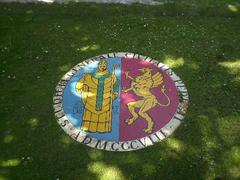
Accademia di Belle Arti di Perugia: Visiting Hours, Tickets, and Travel Guide
Date: 03/07/2025
Introduction
The Accademia di Belle Arti “Pietro Vannucci” stands at the heart of Perugia, Italy, as one of the nation’s most historic and influential art academies. Established in 1573, it is Italy’s second oldest fine arts institution, founded under the Renaissance ethos of elevating the visual arts and nurturing generations of creative talent. Today, the Accademia blends its rich artistic tradition with innovative educational programs and contemporary exhibitions, inviting visitors to explore its storied halls, remarkable collections, and the vibrant cultural life of Perugia.
This comprehensive guide details the academy’s history, museum highlights, visiting hours, ticketing, accessibility, and tips for experiencing Perugia’s surrounding historical attractions. Whether you are an art lover, student, or cultural traveler, the Accademia offers a unique window into the legacy and future of Italian art (PNAdesign; visitaperugia.it).
Historical Overview
Founding and Early Development
Founded in 1573 by painter Orazio Alfani and architect-mathematician Raffaello Sozi, and inspired by the Florentine Accademia del Disegno, the Accademia di Belle Arti di Perugia was originally known as the Accademia del Disegno. It placed a strong emphasis on drawing as the core of artistic education, a principle that has shaped its curriculum ever since. The institution quickly became a gathering place for artists and intellectuals in central Italy, fostering a culture of artistic dialogue and innovation (PNAdesign; Wikipedia).
19th–20th Century Growth
The 19th century saw the academy’s transformation under the direction of Tommaso Minardi, a prominent painter who modernized its educational approach, expanded its facilities, and established its museum and library. The academy became a public institution, increasing its accessibility and impact. In 1940, it was officially recognized as a state academy, affirming its status among Italy’s foremost art schools (Wikipedia; NewTuscia).
The academy has continued to evolve, balancing classical foundations with contemporary fields such as graphic design, digital arts, and product design. Its alumni and faculty include artists like Gerardo Dottori, Annibale Brugnoli, and Silvestro Valeri, whose work helped shape the regional and national art scene (abaperugia.com).
The Academy’s Museum: MUSA
Collections and Highlights
The Museo dell’Accademia di Belle Arti (MUSA) is a treasure trove of over 1,000 works, ranging from Renaissance plaster casts and 19th-century paintings to modern and contemporary graphics. Notable features include:
- Plaster Casts: Approximately 600 casts, including monumental reproductions of Michelangelo’s Medici Chapel figures—“Aurora,” “Day,” “Dusk,” and “Night”—donated by Vincenzo Danti in the late 16th century. The collection also features works by Canova and Thorvaldsen (keytoumbria.com).
- Paintings and Drawings: The gallery houses 430 paintings and over 18,000 graphic works, including pieces by Mariano Guardabassi, Annibale Brugnoli, Gerardo Dottori, Alberto Burri, and rare studies by Jean-Baptiste Wicar and Giovan Battista Piranesi (UmbriaTourism).
- Contemporary Art: The museum regularly features temporary exhibitions, contemporary student projects, and works reflecting the latest trends in Italian and European art (abaperugia.com).
Educational and Cultural Role
MUSA is integral to the academy’s educational mission, allowing students to study original masterpieces and explore the evolution of art. The museum also offers guided tours, workshops, and public programs for all ages, fostering a deeper appreciation of visual arts (visitaperugia.it).
Visiting the Accademia di Belle Arti di Perugia
Locations and Facilities
- San Francesco al Prato: The main campus and museum are located in a restored ex-convent in Perugia’s city center, a short walk from major landmarks.
- Polo Santa Chiara: A modern annex houses departments for applied arts, including design, fashion, cinema, and digital arts (abaperugia.com).
Visiting Hours and Tickets
-
MUSA Museum Hours:
- Thursdays and Fridays: 15:30–18:30
- Saturdays and Sundays: 10:30–13:30 and 15:30–18:30
- Some sources note additional opening days; always check the official website or call +39 075 5730631 for current times (abaperugia.com; visitaperugia.it).
-
Tickets:
- Standard admission: €4–€5
- Reduced tickets: €3 for students, seniors, groups
- Free entry for children under 12 and Perugia residents on select days
- Guided tours: Advance booking required (UmbriaTourism; abaperugia.com)
Accessibility
- MUSA and the main academy site are wheelchair accessible, though some historic areas may have limitations. Notify staff in advance for specific needs.
- Facilities provide support for visitors with disabilities. English assistance is available.
Transportation
- The academy is located centrally and can be easily reached by foot, public transport, or car. Public parking is available nearby, but the historic center has limited vehicle access.
Visitor Experience and Travel Tips
- Plan Your Visit: Allow 1–2 hours to fully explore museum collections and temporary exhibitions.
- Photography: Non-flash photography is generally permitted; confirm with staff for specific shows or classrooms.
- Nearby Attractions: The Accademia is close to Perugia’s key historical sites, such as the Galleria Nazionale dell’Umbria, Palazzo dei Priori, Etruscan Arch, and the medieval city center. Combine your visit with a stroll through Perugia’s charming streets and sample traditional Umbrian cuisine.
- Events: Annual Open Days, exhibitions, workshops, and community events provide additional opportunities to engage with the academy and its creative community (umbrianotizieweb.it).
Educational and Institutional Impact
The Accademia offers a broad range of undergraduate, graduate, and doctoral programs in disciplines such as painting, sculpture, illustration, graphic design, scenography, cinema, and design. Its faculty and alumni continue to shape Italian and international art, maintaining partnerships with cultural institutions worldwide. With nearly 700 students enrolled in 2024–2025, the academy is a vibrant center for artistic training and research (abaperugia.com; umbria.tag24.it).
Frequently Asked Questions (FAQs)
Q: What are the current visiting hours?
A: MUSA is typically open Thursdays and Fridays (15:30–18:30) and Saturdays/Sundays (10:30–13:30, 15:30–18:30). Hours may vary seasonally; check the official website for updates.
Q: How much are tickets?
A: Standard admission is €4–€5; reduced tickets are €3 for students, seniors, and groups. Children under 12 and Perugia residents may enter free on certain days.
Q: Is the museum accessible to people with disabilities?
A: Yes, the main facilities are wheelchair accessible. Some historic areas may have limitations.
Q: Are guided tours available?
A: Yes, guided tours are available and should be booked in advance. Email [email protected] for reservations.
Q: Can I take photos inside the museum?
A: Non-flash photography is allowed in most areas; please confirm with museum staff.
Q: What other attractions are nearby?
A: The academy is near the Galleria Nazionale dell’Umbria, Piazza IV Novembre, the Etruscan Well, and other central Perugia landmarks.
Visual and Interactive Media Suggestions
- Feature images of the San Francesco al Prato building, MUSA’s plaster cast gallery, and iconic works by Gerardo Dottori and Alberto Burri.
- Add alt text such as “Michelangelo plaster cast ‘Dawn’ at Accademia di Belle Arti di Perugia” and “Exterior of Accademia di Belle Arti di Perugia at San Francesco al Prato.”
- Where available, embed virtual tours or interactive maps linking to Perugia’s historical sites.
Conclusion
The Accademia di Belle Arti “Pietro Vannucci” is not merely a museum or school, but a living testament to centuries of artistic excellence in Italy. Its collections, educational programs, and commitment to innovation make it a highlight of any visit to Perugia. Take time to immerse yourself in its galleries, connect with contemporary creativity, and explore the surrounding historic city for a deeply enriching cultural experience.
For the latest updates on visiting, exhibitions, and events, consult the official sources below. To enhance your art journey in Perugia, download the Audiala app for audio guides and curated cultural content.
Official Sources and Further Information
- PNAdesign, 2024, Accademia di Belle Arti ‘Pietro Vannucci’ Perugia
- Wikipedia, 2025, Accademia di Belle Arti Pietro Vannucci
- UmbriaTourism, 2025, Museo dell’Accademia Perugia
- NewTuscia, 2025, Accademia Belle Arti Pietro Vannucci Announcements
- Visitaperugia.it, 2025, MUSA Academy Museum
- Abaperugia.com, 2025, History and MUSA Museum
- Keytoumbria.com, 2024, Museo dell’Accademia di Belle Arti Perugia
- Corrieredellumbria.it, 2025, Accademia di Belle Arti Perugia News
- Umbrianotizieweb.it, 2025, Accademia Open Day
- Umbria.tag24.it, 2025, Accademia Student Enrollment

